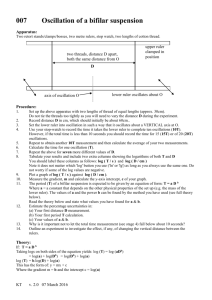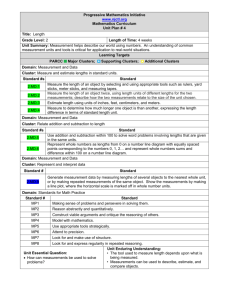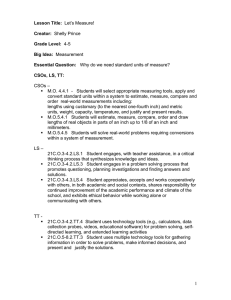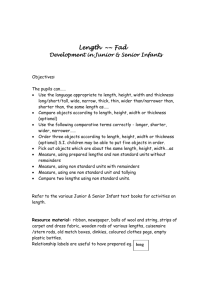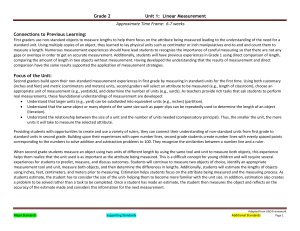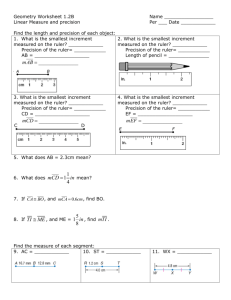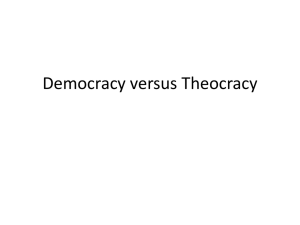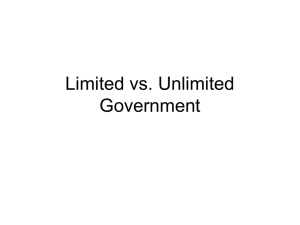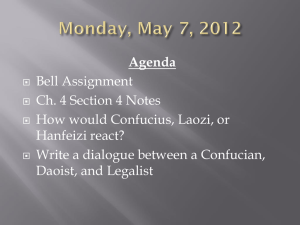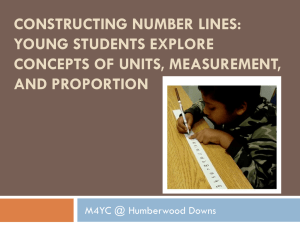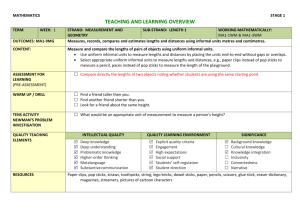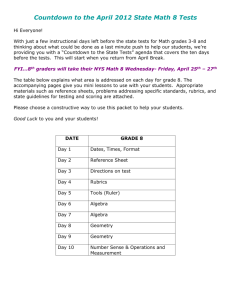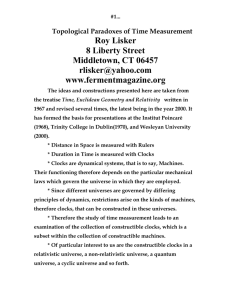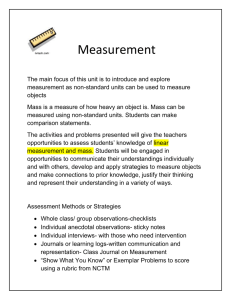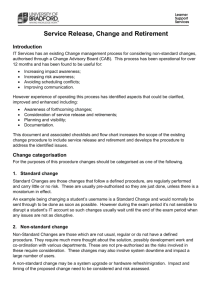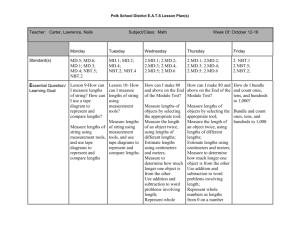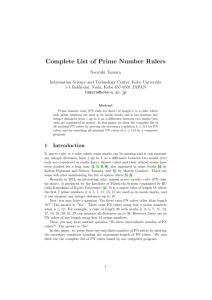Examples of Knowledge Elements for Length STEM Project
advertisement
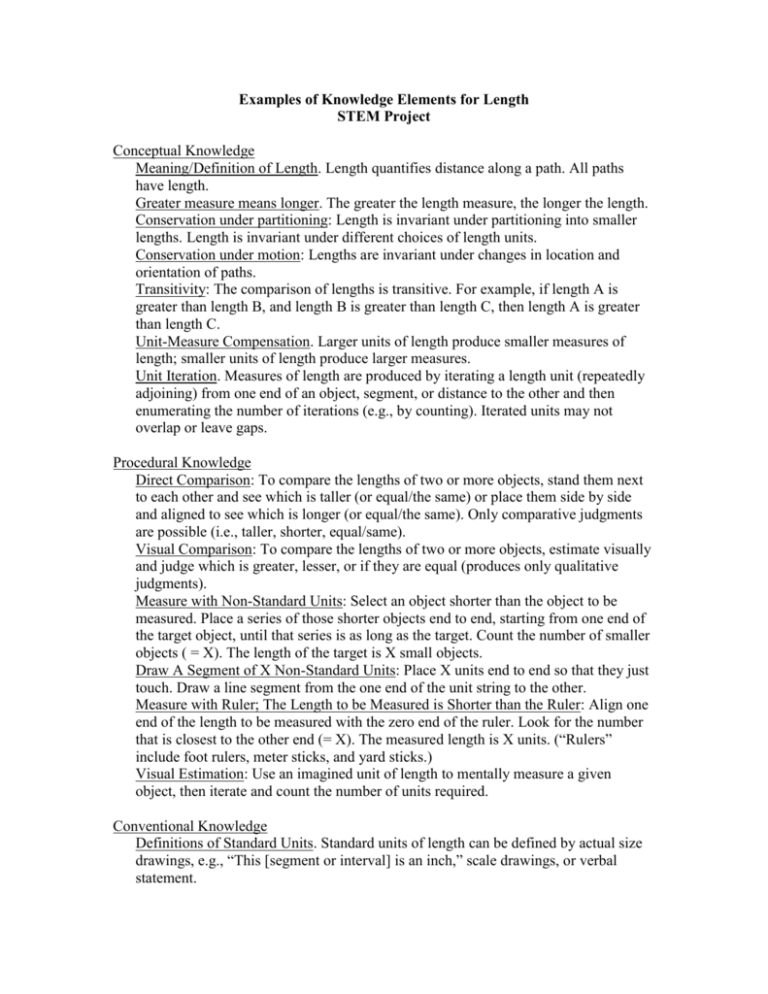
Examples of Knowledge Elements for Length STEM Project Conceptual Knowledge Meaning/Definition of Length. Length quantifies distance along a path. All paths have length. Greater measure means longer. The greater the length measure, the longer the length. Conservation under partitioning: Length is invariant under partitioning into smaller lengths. Length is invariant under different choices of length units. Conservation under motion: Lengths are invariant under changes in location and orientation of paths. Transitivity: The comparison of lengths is transitive. For example, if length A is greater than length B, and length B is greater than length C, then length A is greater than length C. Unit-Measure Compensation. Larger units of length produce smaller measures of length; smaller units of length produce larger measures. Unit Iteration. Measures of length are produced by iterating a length unit (repeatedly adjoining) from one end of an object, segment, or distance to the other and then enumerating the number of iterations (e.g., by counting). Iterated units may not overlap or leave gaps. Procedural Knowledge Direct Comparison: To compare the lengths of two or more objects, stand them next to each other and see which is taller (or equal/the same) or place them side by side and aligned to see which is longer (or equal/the same). Only comparative judgments are possible (i.e., taller, shorter, equal/same). Visual Comparison: To compare the lengths of two or more objects, estimate visually and judge which is greater, lesser, or if they are equal (produces only qualitative judgments). Measure with Non-Standard Units: Select an object shorter than the object to be measured. Place a series of those shorter objects end to end, starting from one end of the target object, until that series is as long as the target. Count the number of smaller objects ( = X). The length of the target is X small objects. Draw A Segment of X Non-Standard Units: Place X units end to end so that they just touch. Draw a line segment from the one end of the unit string to the other. Measure with Ruler; The Length to be Measured is Shorter than the Ruler: Align one end of the length to be measured with the zero end of the ruler. Look for the number that is closest to the other end (= X). The measured length is X units. (“Rulers” include foot rulers, meter sticks, and yard sticks.) Visual Estimation: Use an imagined unit of length to mentally measure a given object, then iterate and count the number of units required. Conventional Knowledge Definitions of Standard Units. Standard units of length can be defined by actual size drawings, e.g., “This [segment or interval] is an inch,” scale drawings, or verbal statement. Definitions of Non-Standard Units. Non-standard units, including bodily units such as hand-span, pace, and arm-span (cubit) can be defined by actual size drawings, e.g., “This is an hand-span,” scale drawings, or verbal statement. Units & Sub-Units on Rulers/Measuring Tapes. Both customary and metric rulers subdivide standard units of length (inches or centimeters) into smaller units. The relative size of units and sub-units correspond the size their endpoint marks on the ruler, i.e., larger units are bounded by larger marks. Conventions for Abbreviating Units. There are standard (accepted) ways of indicating units beside measure numbers and line segments that do not require writing the full
